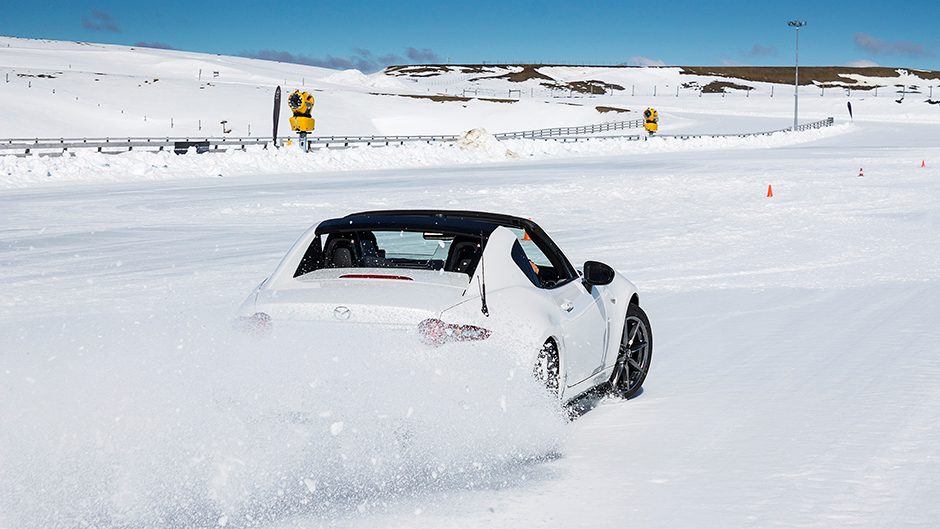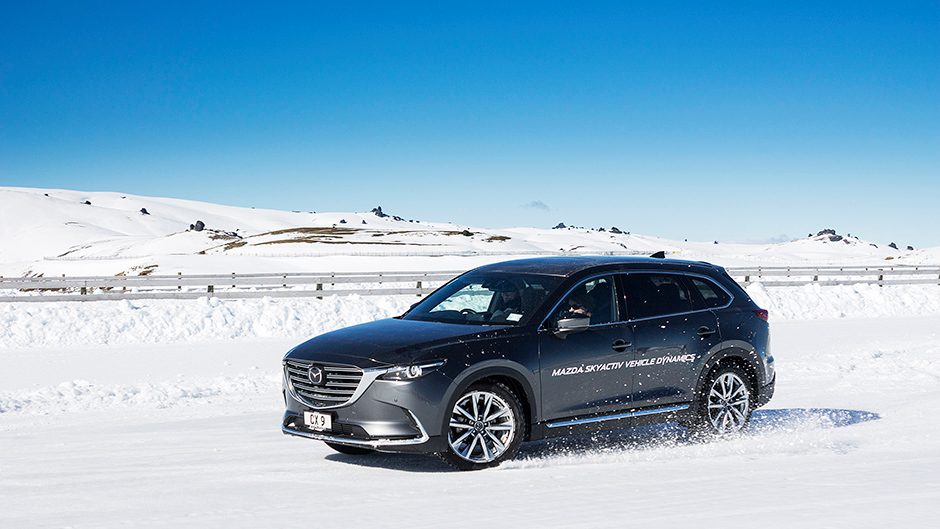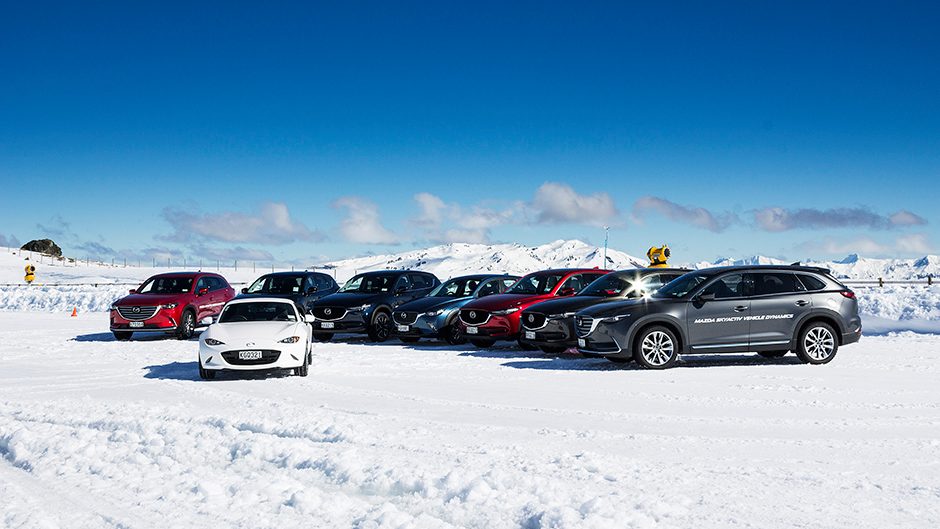And these desirable traits tend to be amplified on a slippery surface. Mazda invited a bunch of us hacks to play around on the icy flats of the Southern Hemisphere Proving Ground down Wanaka way recently. The idea was to experience more fully the benefits of the company’s all-wheel drive systems in its SUVs, which also manage to have that ‘feeling of unity’.
This ice driving shenanigans is usually the preserve of the European brands, Mazda being one of the first Japanese companies to venture out on the ice. We were lucky to get any sideways action at all as it turned out. These ice drives are ever so dependent on cold, clear weather and there was just barely enough of the hard white stuff to get in a morning’s worth of play, er, instruction.

We were driving two of Mazda’s most popular models, the CX-5 and the big CX-9, each selling so well there are waiting lists of up to three months for them. The theory behind Mazda’s all-wheel drive system, dubbed i-Active AWD, is to complement the sporty and engaging nature of the vehicles rather than hindering it. In that regard, the variable system has been designed to be proactive rather than reactive to slipping wheels, and to be fast acting.
Some 27 sensors are used to determine if extra traction is needed and the system makes these calculations 200 times per second. Other sensors are monitoring the driver’s intentions by looking at the steering and throttle angles, and wheel speed. The rear wheels are always driven, what Mazda calls stand-by torque, as this helps speed up and smooth out the power transfer as more drive goes rearward.
So under normal, straight ahead highway cruising, 99 per cent of the drive is on the front axle and the system will constantly vary this to a maximum of 50/50 front to rear when needed. Mazda says this helps eliminate any potential front wheel slip, which they reckon can help fuel consumption.

Mazda’s intention is to keep refining its AWD system until it’s able to return better fuel consumption than a front-wheel drive system by eliminating those instances when the wheels slip and therefore efficiency is lost. The bit responsible for the torque split is the Active Torque Control Coupling which is activated electromagnetically, so it can respond instantly and at any speed.
The system has been developed and manufactured by Mazda to ensure maximum efficiency, the unit being compact and light, using durable low viscosity oil to minimise fluid pumping losses. The AWD system is said to be 51kg on the CX-5, whereas the AWD bits of the old CX-7 added 89kg. So does it actually work? It is hard to get those front wheels slipping on gravel, as the drive up to the SHPG takes you up and over the old Race to the Sky road, a spiralling gravel path that gives ample opportunity to test the system.
There’s no feeling of driveline lag as it delivers extra shove to the rear, so there’s no scrambling of the front tyres for traction on the sharp uphill bends. Mazda’s stability control system is said to be engineered under a driver’s car philosophy which defers to the driver first to help control the car before it comes in to save the day and you can get a few degrees of slide going on these gravel bends before the system will intervene to correct things.

If you try to keep things tidier, that leeway certainly is appreciated. On ice, the fronts occasionally will spin when given too much gas, though are quickly snuffed as more drive is routed rearwards.
The SUVs manage to feel quite neutral through the slaloms, the CX-5 in particular, and it can be pointed particularly accurately and smoothly as it benefits from another of Mazda’s invisible helpers, the seemingly mythical G-Vectoring Control. This, in Mazda’s words optimises tyre load and vehicle posture and helps control both lateral and longitudinal movements. Yet it does it all imperceptibly.
When you turn the wheel, the system reduces engine torque minutely to transfer the weight of the car on to the front to help load the tyre and optimise grip. While tracking through the corner, the torque is reintroduced, which helps transfer the load off the front and onto the rears to aid stability. This also helps smooth the steering action. It’s a small thing, and all done electronically.
It’s been rolled out to nearly all models, the CX-9 adopting it from next month, but it’s not on the MX-5. Talk of which, the most fun of the day was had at the wheel of the rear driver, trying to thread it through the cones on the throttle. But it did prove to highlight how effective AWD, especially intelligent AWD, is at making things stick when conditions are far from ideal.


